Khiri Travel Laos, a sustainable Laos DMC, specializes in crafting personalized experiences for travelers who want learn and engage with the local culture. Being blessed with a stunning natural biodiversity – more than 70 percent of which is forest cover – charming heritage towns and a very relaxed mentality, Laos is the perfect place to shift down a gear and enjoy life at a slower pace. Also known as the ‘Land of a Million Elephants’, Laos is a melting pot of different ethnic minorities, many of which have been settled in the region for centuries – making this mountainous country a perfect destination for explorers and adventure seekers.
We take pride in accommodating our clients’ special interests into each trip we plan and ensuring that our local guides are building bridges with local communities to create authentic encounters for all our clients. Having a small but highly experienced team, we make sure that all clients feel at home and perfectly taken care of while traveling with us. With offices in three different locations, we are always there for our clients and ready to provide advice with our in-depth local knowledge. In addition, we are dedicated to supporting local communities and organisations that strive to develop the living standards of their people. These efforts range from environmental conservation to social initiatives, and encouraging small businesses – all of which have been recognized by Travelife, an organization that sets international standards in sustainable tourism.
















